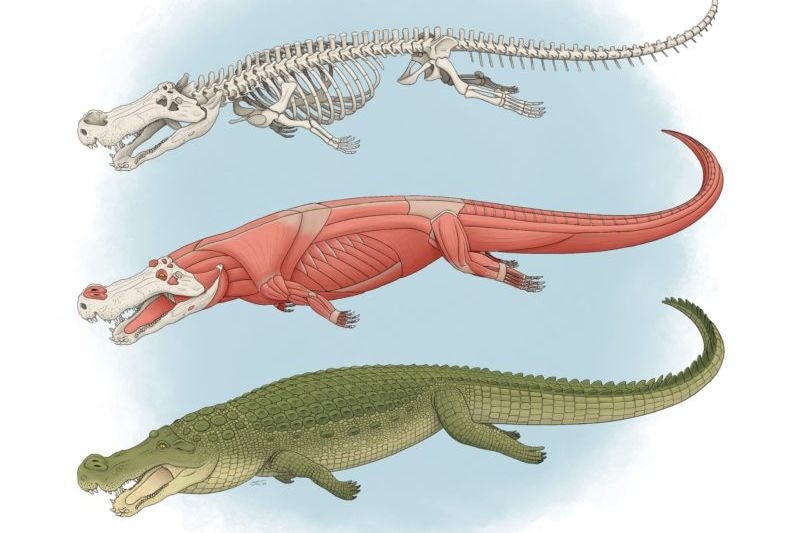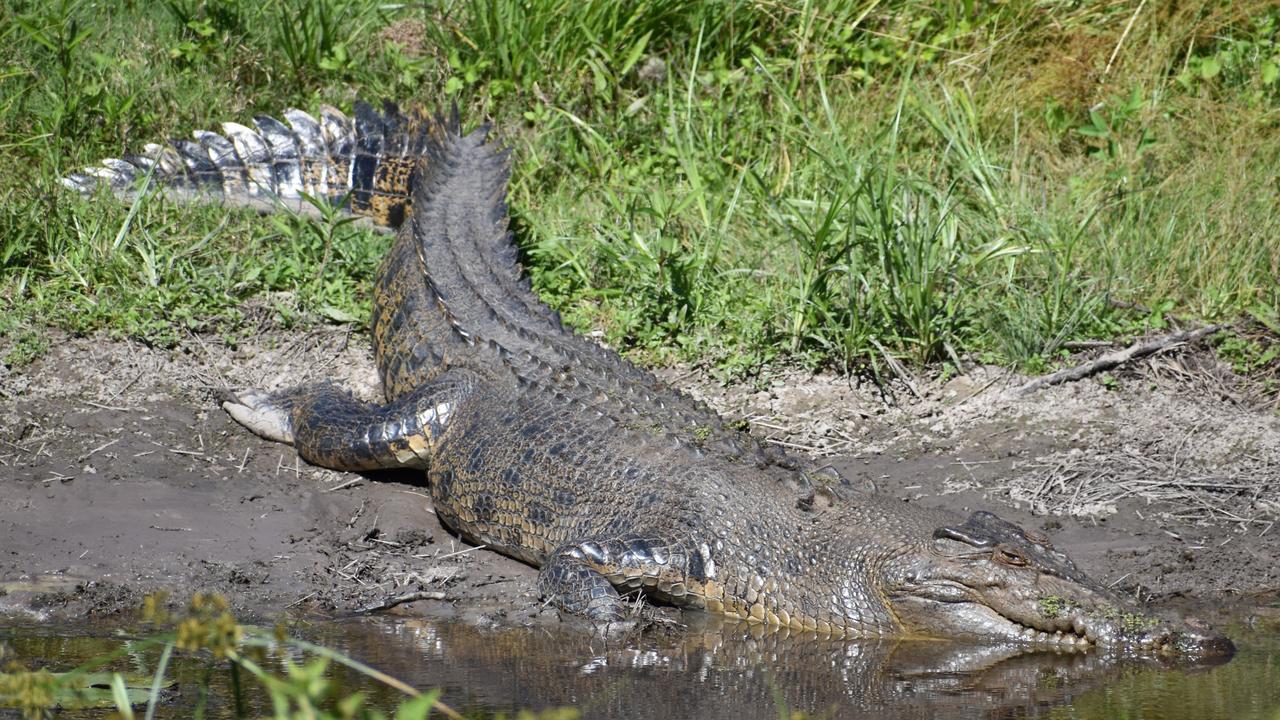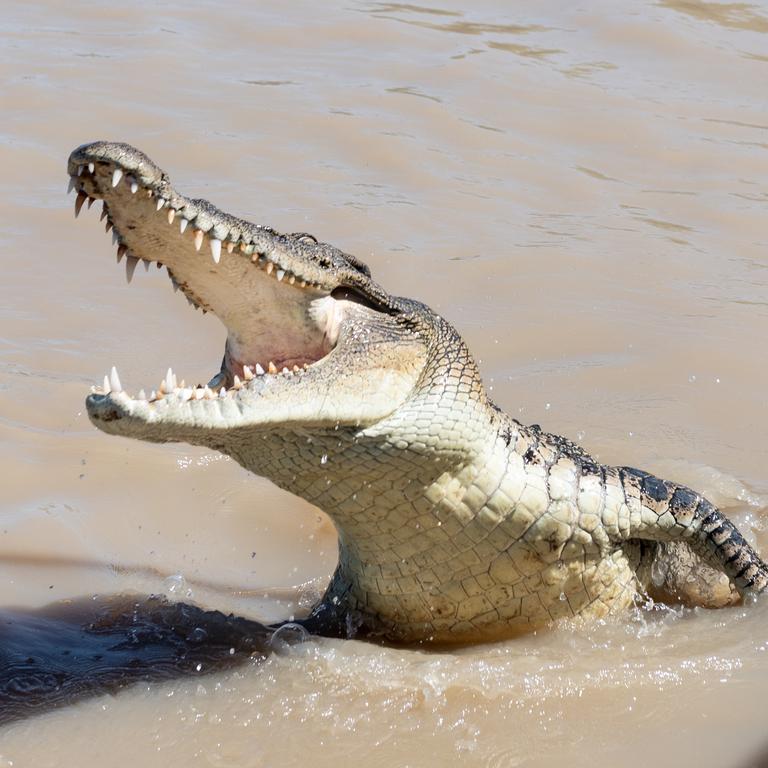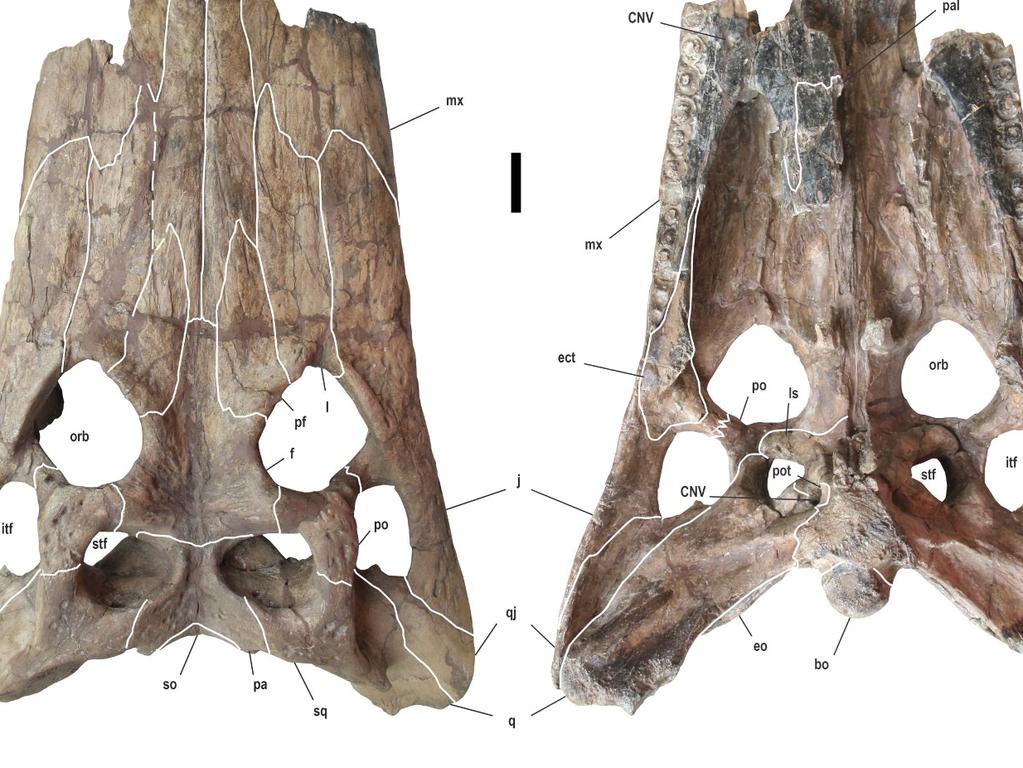‘Terror Crocodile’ Deinosuchus ate dinosaurs with teeth the size of bananas
The “bizarre” and terrifying ten-metre long ancestor to the crocodile had banana-sized teeth and ate everything in its path.
Scientists have discovered a terrifying ten-metre long crocodile ancestor that used its banana-sized teeth to eat dinosaurs about 80 million years ago.
The Deinosuchus (literally means “terror crocodile”) was really more closely related to the modern alligator than crocodile, but the terror part of the name is perfectly accurate.

RELATED: Kangaroos have huge fight in the snow
RELATED: Where you can buy wild animals on the black market
To make them even scarier, they appeared to have no real loyalty to any sort of diet: fossil records showing they were comfortable chomping down turtles, dinosaurs and pretty much anything else that got close enough.
The beasts lived in what is now North America.
Deinosuchus riograndensis lived in the west of America, ranging from modern day Montana to northern Mexico.
Deinosuchus schwimmeri lived on the Atlantic coastal plain in an area that now stretches from New Jersey to Mississippi.

RELATED: Sharks found living in active volcano
This was tens of millions of years ago and at the time North America was divided by a shallow sea extending from the Arctic Ocean to the Gulf of Mexico.
Deinosuchus are believed to have been the largest predator in its ecosystem at the time, outweighing even the largest dinosaurs of the period.
A new study of existing fossil records led by Dr Adam Cosette, associate professor at the New York Institute of Technology based at Arkansas University, described the creature as “bizarre” and “monstrous”.

“Deinosuchus was a giant that must have terrorised dinosaurs that came to the water’s edge to drink,” Dr Cossette said.
“Until now, the complete animal was unknown,” he added.
“These new specimens we’ve examined reveal a bizarre, monstrous predator with teeth the size of bananas.”
“It had two large holes present at the tip of the snout in front of the nose,” Dr Cossette added.
“These holes are unique to Deinosuchus and we do not know what they were for, further research down the line will hopefully help us unpick this mystery and we can learn further about this incredible creature.”

University of Iowa palaeontologist Professor Christopher Bochu co-authored the study and said the “strange animal” dispelled some myths about crocodiles and alligators, showing they “are not ‘living fossils’ that haven’t changed since the age of dinosaurs”.
“They’ve evolved just as dynamically as any other group,” Professor Bochu said.
Interestingly, despite its alpha predatory nature, the Deinosuchus appears to have disappeared before the mass extinction of dinosaurs, for currently unknown reasons.
The study is published in the peer-reviewed Journal of Vertebrate Paleontology.



